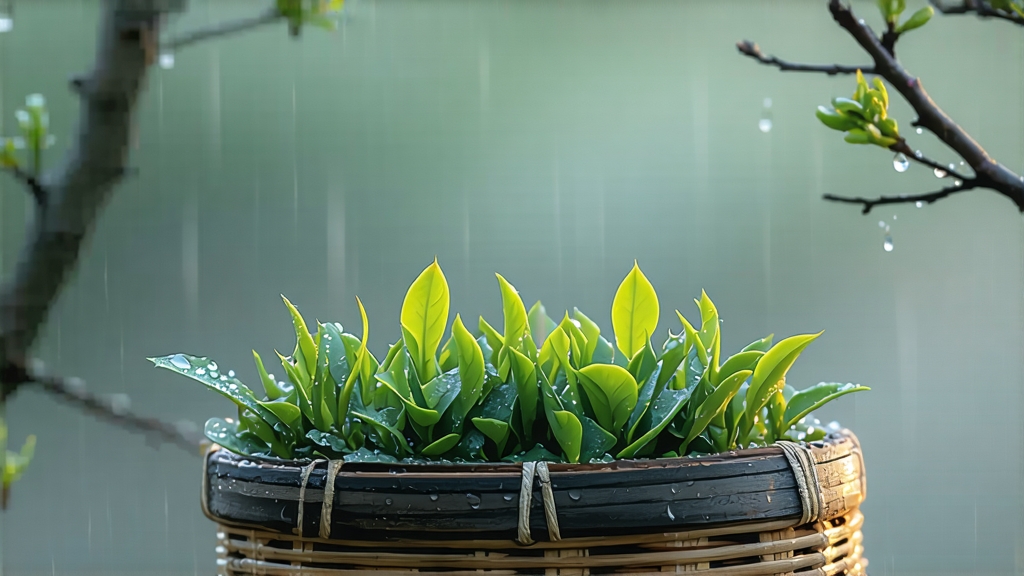
Tucked between the mist-laden hills of Dongting Mountain beside Taihu Lake in Jiangsu Province, Biluochun—literally “Green Snail Spring”—is one of China’s ten most celebrated teas. Its name alone evokes the season and shape that define it: tiny, spiral-shaped leaves rolled like a snail’s shell, plucked in the brief window when spring begins to warm the lake air. To international drinkers who know only Longjing or gunpowder, Biluochun offers a softer, more floral revelation, a tea whose history is as curled and layered as its dry leaf.
Historical records first mention Biluochun during the late Tang dynasty, but it entered imperial fame in the Kangxi era of the Qing. Court annals tell of the Kangxi Emperor tasting the tea on his southern inspection tour; struck by its “frighteningly strong fragrance,” he is said to have renamed it from the rustic “Xia Sha Ren Xiang” (“scary fragrance”) to the elegant Biluochun we know today. For three centuries the tea remained a palace tribute, shipped north in small bamboo-lined chests cooled by lake ice so the buds would arrive still smelling of apricot blossoms.
Botanically, Biluochun belongs to the small-leaf cultivar group Camellia sinensis var. sinensis. Within Dongting’s microclimate two clonal selections dominate: the traditional “Dongting group” bushes that root directly into granite crevices, and the newer F1 hybrid “Su Cha 1,” bred for slightly larger buds and frost resistance. Purists insist only the former delivers the tea’s signature white down and orchid note, yet both share the same plucking standard: one unopened bud plus the adjacent half-expanded leaf, no longer than 2.5 cm, harvested before the Qingming festival when amino acids peak and tannins are still gentle.
Crafting Biluochun is a race against time and oxidation. Within two hours of plucking, the fragile leaves are spread in bamboo trays no thicker than 3 cm to wither under natural mountain breeze; direct sunlight is avoided to preserve chlorophyll. The critical “sha qing” or kill-green step follows: 300 g batches are tossed onto a cast-iron pan pre-heated to 180 °C. For three minutes the master’s bare hands flutter through the leaves, a motion called “trembling fire,” simultaneously destroying enzymes and coiling the bud. Temperature is then dropped to 70 °C and the same batch is rolled for fifteen minutes against the pan’s curved wall, forming the iconic spiral while moisture drops to 30 %. A final low-temperature drying at 50 °C for forty minutes sets the shape and locks in fragrance; total processing time never exceeds ninety minutes, after which the tea must rest twenty-four hours in lime-lined earthen jars to “return fire” and stabilize internal moisture.
Western drinkers often brew green tea with boiling water and then complain of bitterness; Biluochun punishes such carelessness immediately. The ideal water is spring or filtered, cooled to 75 °C. Use a tall glass or a gaiwan of 150 ml capacity; 3 g of leaf (roughly one level teaspoon) suffices. After warming the vessel, pour the water along the wall so the spirals sink slowly. The first infusion, thirty seconds, releases a pale chartreuse liquor with a nose of white peach and sweet pea. The second, at twenty seconds, intensifies the orchid note while a marine hint reminiscent of steamed edamame emerges. By the fourth infusion the leaves fully unfurl, revealing tiny serrated margins and a vein so delicate it appears drawn with a hairline brush. Stop at five infusions; unlike oolong, Biluochun does not reward endurance, only freshness.
Professional cupping follows a tighter protocol: 3 g leaf, 150 ml porcelain bowl, 80 °C water, four-minute steep. Evaluate aroma first—lift the lid swiftly and inhale at 3 cm distance; top-grade lots deliver a “cold fragrance” that lingers after the liquor has cooled. Next, sip noisily, aspirating across the palate; the liquor should coat the tongue like light cream, finish with an alpine coolness, and leave the throat moist after three minutes. Finally, inspect spent leaves under a 5× loupe; uniform chestnut-green color, intact bud tips, and absence of red edges indicate flawless kill-green. Any astringency that clings to the molars is judged a defect, proof that picking extended past noon or that the pan fire was uneven.
Beyond sensory pleasure,